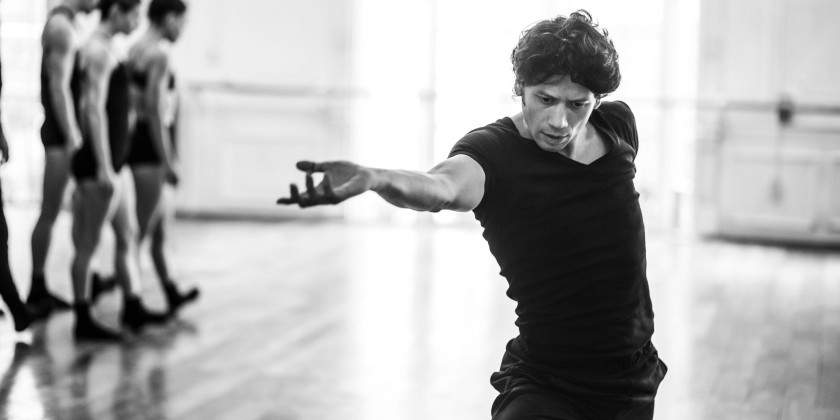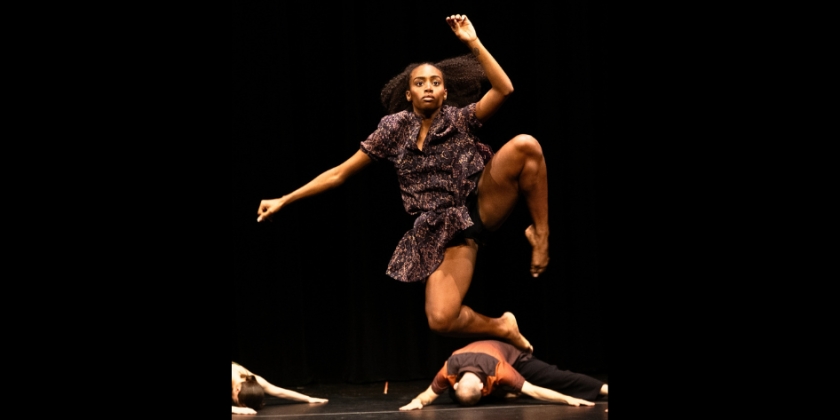IMPRESSIONS: Oona Doherty's “Navy Blue” at The Joyce Theater
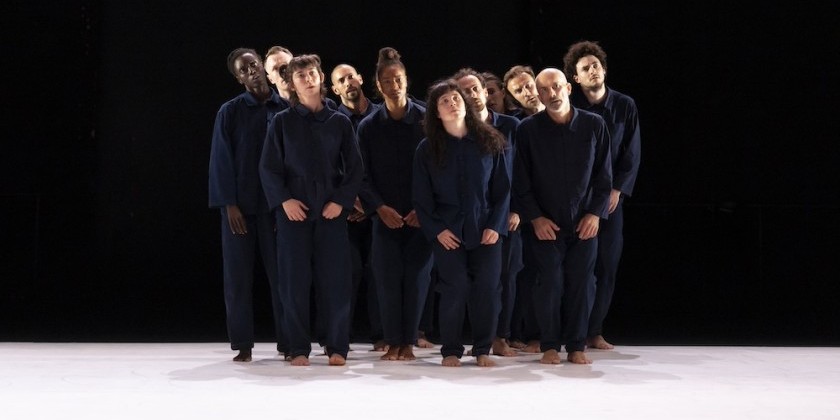
Choreography: Oona Doherty in collaboration with the dancers
Dancers: Arno Brys, Kevin Coquelard, Thibaut Eiferman, Zoé Lecorgne, Mohamed Mahklouf, Andréa Moufounda, Magdalena Öttl, Mathilde Roussin, Hilde Ingeborg Sandvold, Joseph Simon, Sati Veyrunes
Original Music Score: Jamie xx // Music Production: William Smith // Additional music: Sergueï Rachmaninov
Writing Collaborator: Bush Moukarzel // Video Design: Nadir Bouassria // Lighting Design & Technical Director: John Gunning // Lighting Operator: Eoin Lennon // Costume Design: Oona Doherty & Lisa Marie Barry // Stage Manager: Lisa Marie Barry
What does it mean to make dance work these days? How can dance reconcile social dissonances and personal doubts in the current political climate? To approach these questions, Northern Irish choreographer Oona Doherty melds visceral movement language, crackling musical crosscurrents, and confrontational text with a penchant for darkness and a stubborn drive toward liberation. Her evening length ensemble work Navy Blue tackles a writhing metaphysical sprawl stitched with seams of political specificity to vocalize pandemic-era existential crises and imagine pathways through an unstable present into an uncertain future. While hers is not a sunny outlook, Doherty and her collaborators craft an arc of inquiry firmly rooted in the indomitability of the human spirit expressed through the moving body.
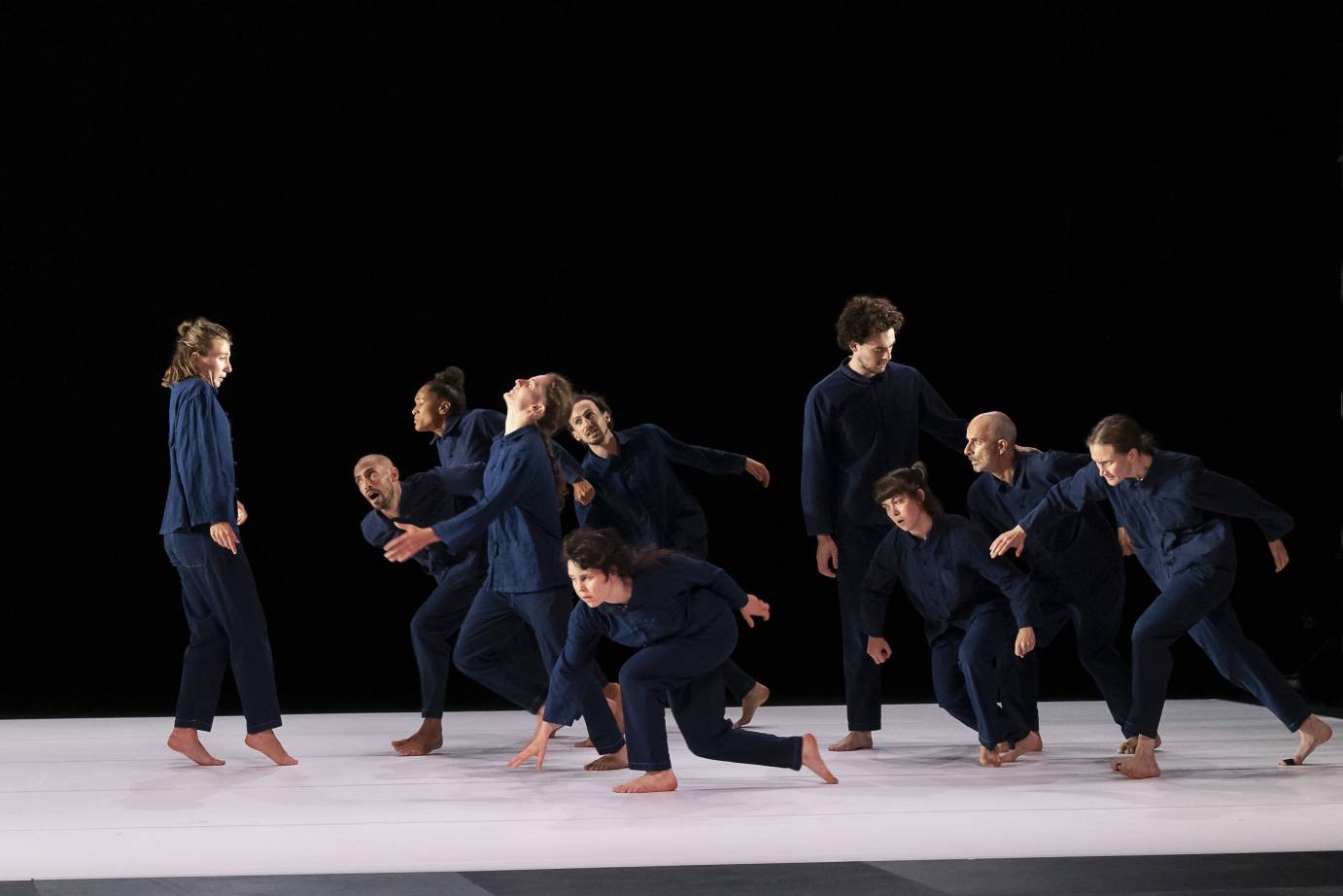
Presented at The Joyce Theater in association with the Irish Arts Center with support from Dance Reflections by Van Cleef & Arpels, Navy Blue’s development spans over two years, including an extensive tour of venues and festivals across Europe. It is a dense and challenging work that demands patient, participatory witnessing and rewards in turn with piercing empathy. Light and sound are equal players in shading Doherty’s uncontainable arena of “existential dread,” and the superb cast of twelve delivers a collective expression of solidarity and isolation with unblinking resolve, their intensity of control matched only by their full-bodied abandon.
The density and persistence of ensemble unison throughout the work reckons with the problems of rote conformity and the struggle for individuation and acceptance. Doherty’s choreography is both depersonalized and hyperpersonal — she credits the dancers as choreographic collaborators — shot through with textural motifs that explode myths of uniformity and rebellion. Bodies shift in and out of rigidly organized lines and regimental grids, trudging futile circles past the point of exhaustion. Formations disintegrate and assemble just as individual bodies tremble to pieces and snap to attention, ever conscious of their containment and vigilant of the unseen forces that bind them together.
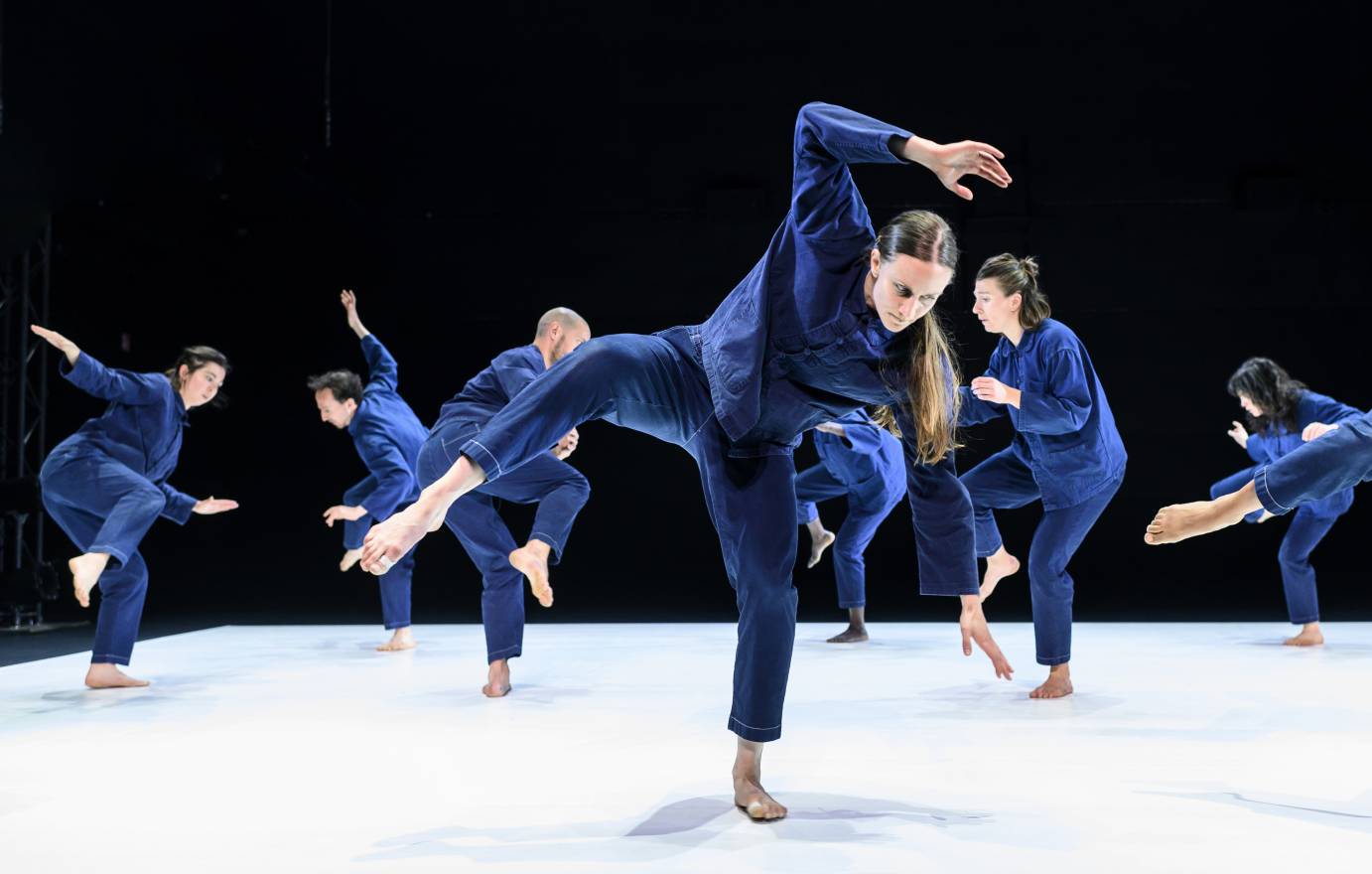
Snippets of ballet, particularly fleet and often spinning bourrées, shape an interrogation of tradition amid the dramatic strains of a Rachmaninov piano concerto. The movement, never flashy, offers a grateful respite from the contortions and acrobatics of mainstream contemporary dance; instead, its virtuosity comes straight from the gut with an abiding sense of inevitability. In a landscape of musical excess, the dancers allow their high backbends, slow crouches, and bladelike arms to speak with multivalent clarity on the isolating perils of groupthink. For better and worse, the ensemble is a unit that holds simultaneous powers of solidarity and oppression, extended to the viewer by means of direct gazes and legible gestures. Bodies fall one by one as loud, gunshot-like thumps puncture the adagio movement of the Rachmaninov concerto at irregular intervals. Individuals grow increasingly disoriented even as the ever-diminishing group grasps at interdependence; soon the final body drops into darkness.
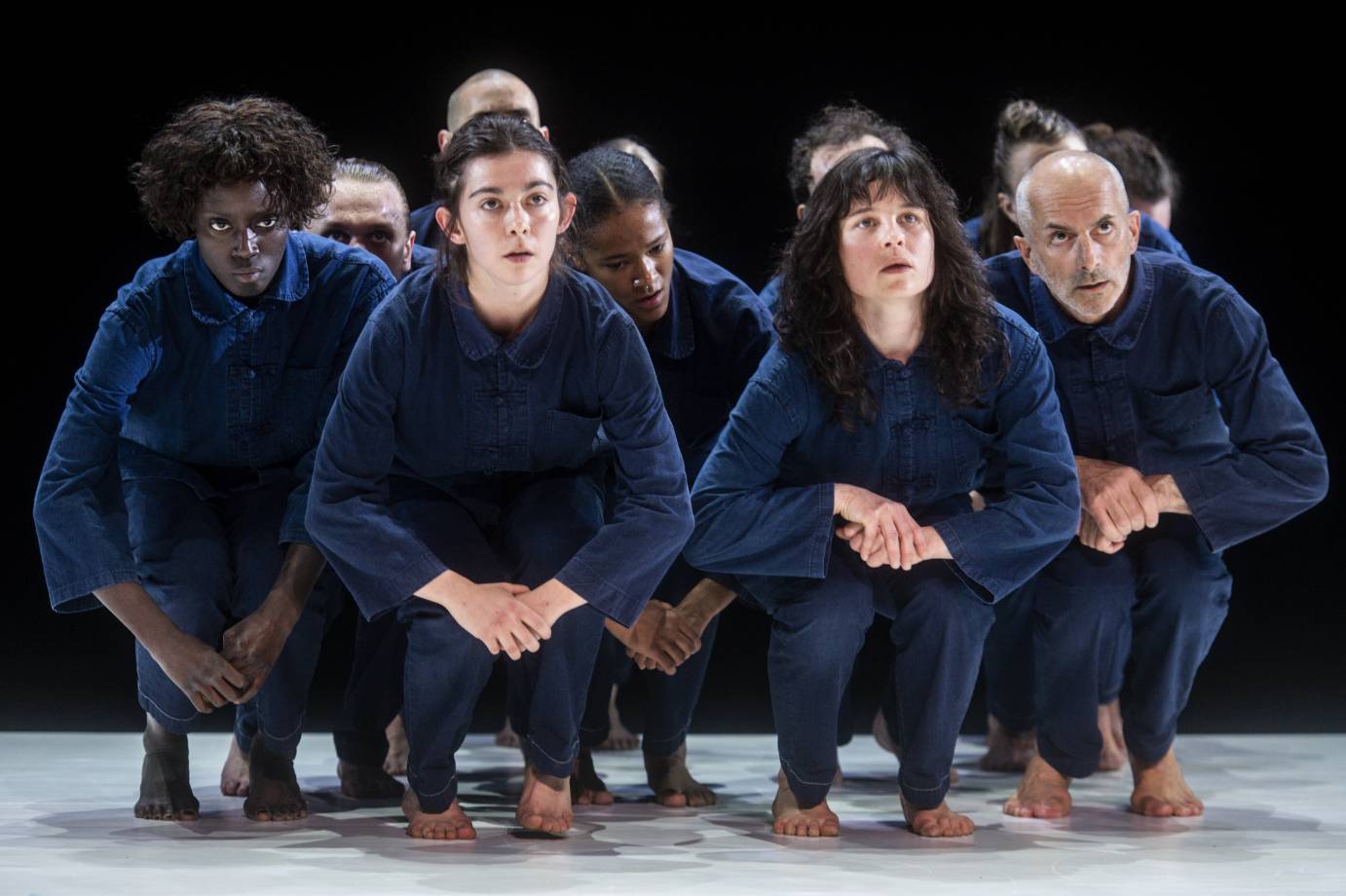
Tones begin to shift in the darkness as the work’s themes expand outward and inward: an original electronic score by Jamie xx begins its slow build as iridescent blue glimmers reanimate the dancers. A sprawling speech narrated by Doherty with flat yet urgent intonations connects metaphysical and mundane through strings of short, poetic phrases and meandering lists: controversial political figures, dates of historical flashpoints, an enumeration of Navy Blue's project budget. In this rushing river of words the dancers grow increasingly restless in their suffocating lines and endless loops; they slither out of paranoia and entrapment in short breakout solos only to be drawn back into the inevitability of the group. The work’s spiraling finale pushes the dancers over the edge: from staring into the void to hurtling through it. The atmosphere dims to a murky central pool as dark uniforms are flung off to reveal flashes of flesh: bodies sprint and thrash, boundless and raging yet somehow soft. They are vulnerable, they are insignificant — they are all they have.
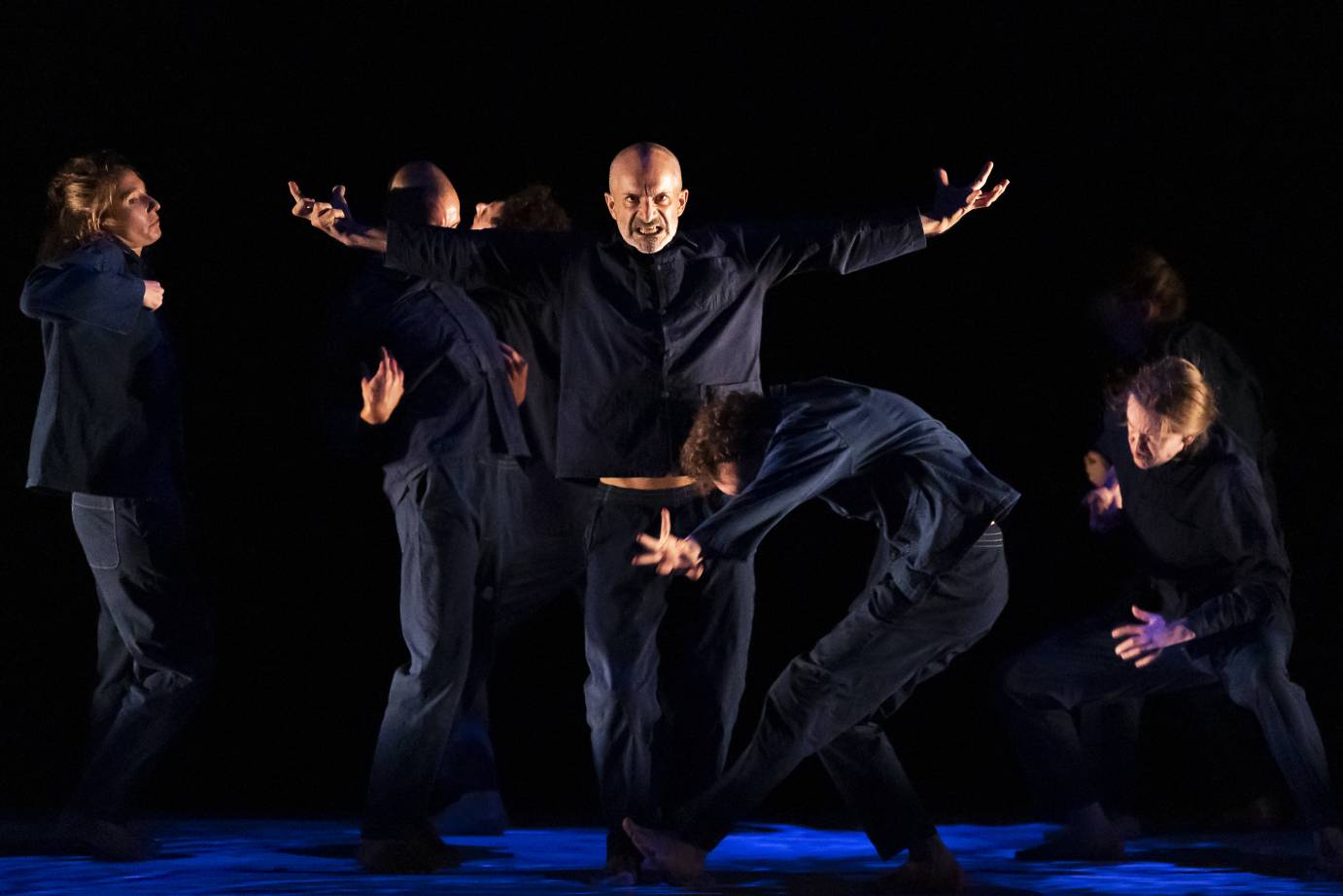
While Navy Blue is undoubtedly timely and explicit in its themes and messaging, its hyperspecificity at times circumscribes the fundamental power of its movement. Doherty’s penchant for embodied politics comes through clearly in her kinetic language and compositional ethos, so much so that spoken language can almost do it a disservice by narrowing her expressive frame. The work speaks in many registers, though its most effective vehicle remains the pulsating bodies and roaring spirits of its dancers. It is with a firm reliance on this core that Doherty can continue to grow as a voice of her generation.








